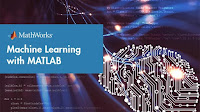Statistics in MATLAB: A Primer
MoonJung Cho, Wendy L. Martinez ... 286 pages - Publisher: Chapman and Hall/CRC; (December, 2014) ... Language: English - ISBN-10: 1466596562 - ISBN-13: 978-1466596566
Fulfilling the need for a practical user’s guide, Statistics in MATLAB: A Primer provides an accessible introduction to the latest version of MATLAB and its extensive functionality for statistics. Assuming a basic knowledge of statistics and probability as well as a fundamental understanding of linear algebra concepts, this book: Covers capabilities in the main MATLAB package, the Statistics Toolbox, and the student version of MATLAB * Presents examples of how MATLAB can be used to analyze data * Offers access to a companion website with data sets and additional examples * Contains figures and visual aids to assist in application of the software *Explains how to determine what method should be used for analysis. Statistics in MATLAB: A Primer is an ideal reference for undergraduate and graduate students in engineering, mathematics, statistics, economics, biostatistics, and computer science. It is also appropriate for a diverse professional market, making it a valuable addition to the libraries of researchers in statistics, computer science, data mining, machine learning, image analysis, signal processing, and engineering.
Fulfilling the need for a practical user’s guide, Statistics in MATLAB: A Primer provides an accessible introduction to the latest version of MATLAB and its extensive functionality for statistics. Assuming a basic knowledge of statistics and probability as well as a fundamental understanding of linear algebra concepts, this book: Covers capabilities in the main MATLAB package, the Statistics Toolbox, and the student version of MATLAB * Presents examples of how MATLAB can be used to analyze data * Offers access to a companion website with data sets and additional examples * Contains figures and visual aids to assist in application of the software *Explains how to determine what method should be used for analysis. Statistics in MATLAB: A Primer is an ideal reference for undergraduate and graduate students in engineering, mathematics, statistics, economics, biostatistics, and computer science. It is also appropriate for a diverse professional market, making it a valuable addition to the libraries of researchers in statistics, computer science, data mining, machine learning, image analysis, signal processing, and engineering.



















